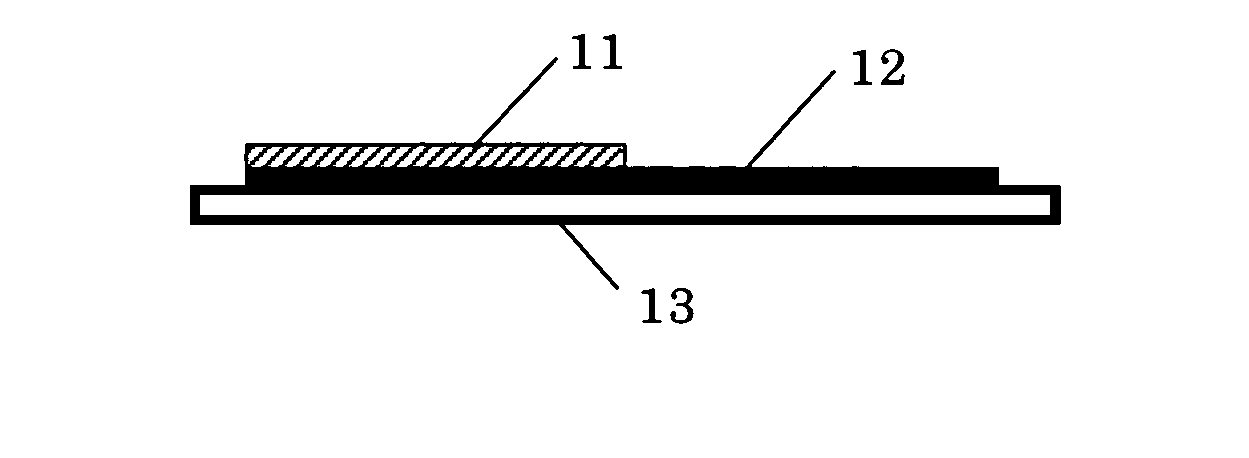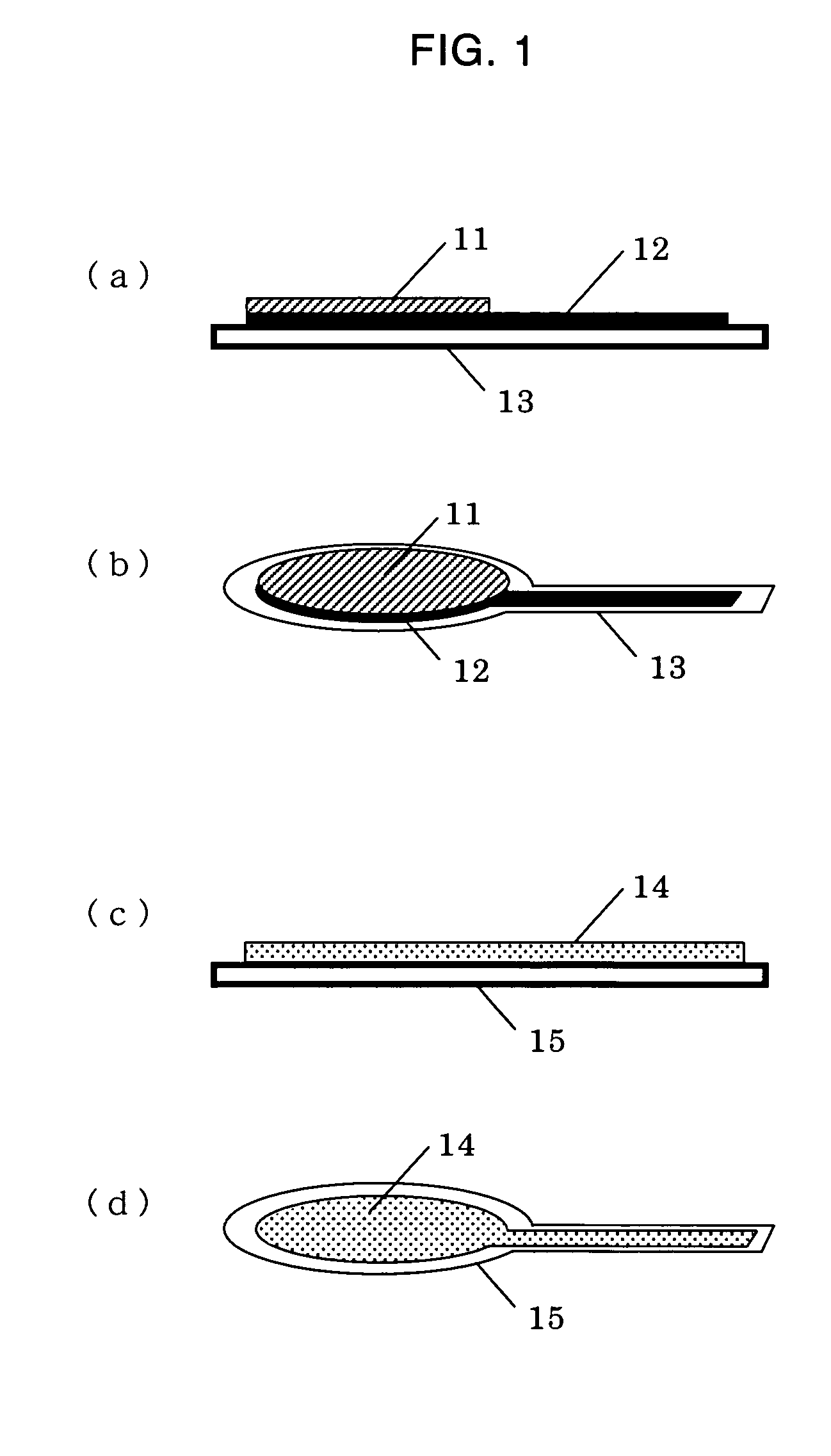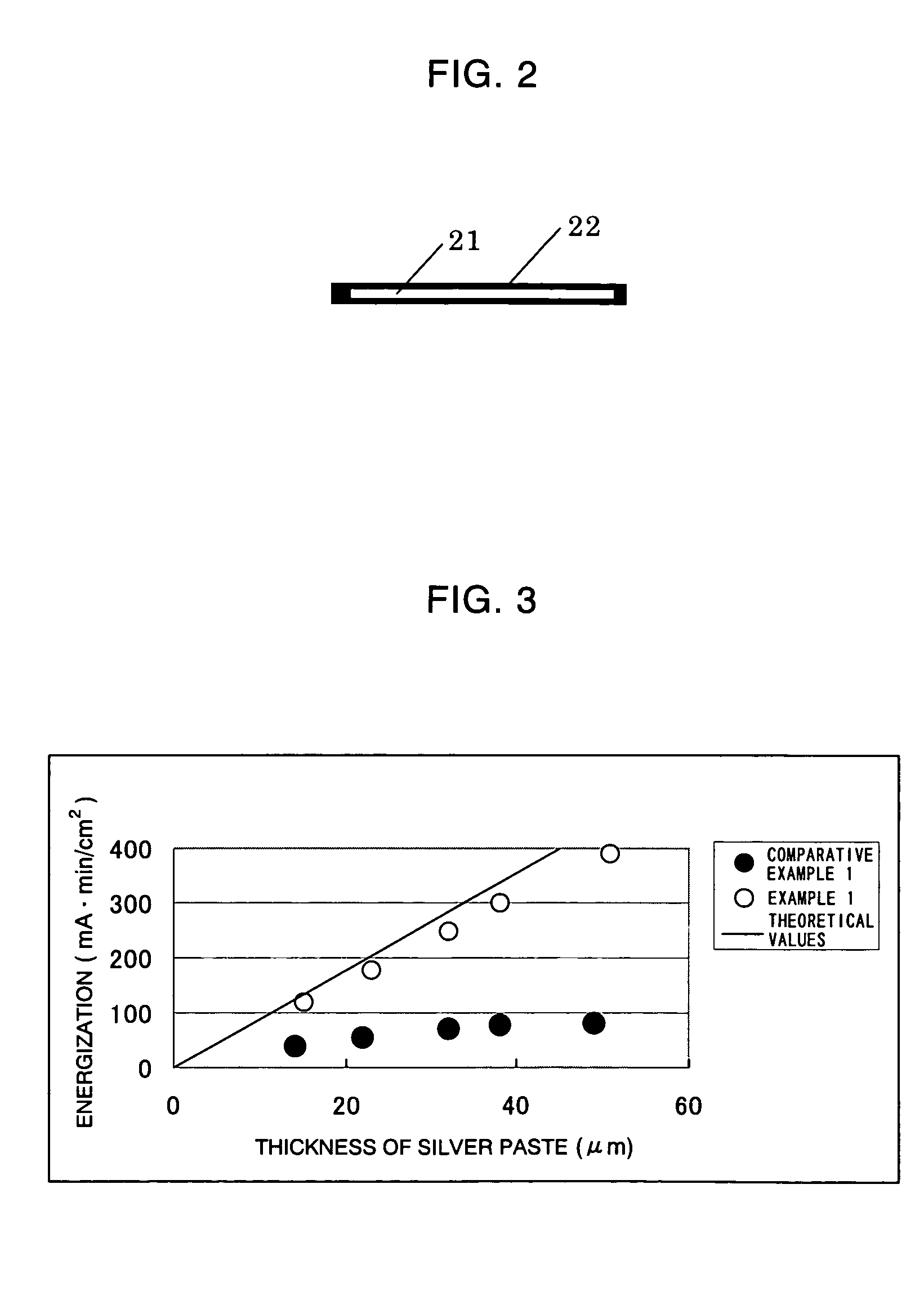Electrode structure
a technology of conductive paste and electrode, applied in the field of electrode structure, can solve the problems of low productivity, increase in manufacturing cost and molding cracking, and the electrode produced using such a conductive paste does not follow, and achieves the effect of simple structure and simple manner
- Summary
- Abstract
- Description
- Claims
- Application Information
AI Technical Summary
Benefits of technology
Problems solved by technology
Method used
Image
Examples
example 1
[0042] Production of electrode of the present invention: A polyethylene terephthalate film was used as the insulating base 13 and a conductive paste predominantly made of carbon was applied onto this film to 10 μm in thickness (first layer 12). Furthermore, a conductive paste predominantly made of silver was applied onto the carbon to several types of thickness (second layer 11). The thickness of the silver paste after drying was 15, 23, 32, 38 and 51 μm, respectively.
[0043] Production of reference electrode: Two silver plates containing silver of purity greater than 99.99% were prepared, used as an anode and cathode, and energized in a physiological salt solution at 1 mA / cm2 for six hours. At this time, the reacting electrode (silver / silver chloride electrode) on the anode side was used as a reference electrode.
[0044] Measurement of amount of energization: The electrode of the present invention was used as an anode and the reference electrode was used as a cathode, these electrod...
PUM
| Property | Measurement | Unit |
|---|---|---|
| area | aaaaa | aaaaa |
| thickness | aaaaa | aaaaa |
| thickness | aaaaa | aaaaa |
Abstract
Description
Claims
Application Information
 Login to View More
Login to View More - R&D
- Intellectual Property
- Life Sciences
- Materials
- Tech Scout
- Unparalleled Data Quality
- Higher Quality Content
- 60% Fewer Hallucinations
Browse by: Latest US Patents, China's latest patents, Technical Efficacy Thesaurus, Application Domain, Technology Topic, Popular Technical Reports.
© 2025 PatSnap. All rights reserved.Legal|Privacy policy|Modern Slavery Act Transparency Statement|Sitemap|About US| Contact US: help@patsnap.com



